Where to go in Switzerland on a short trip: Alps, lakes, and cities
Switzerland is an extremely popular country for those planning multi-stop tours around Europe, yet very few potential first-time visitors actually know specifically where they want to go. Everyone seems to know that it has the most beautiful views of the Alps and some very impressive cities, but there are actually many misconceptions among casual trip planners, so I’d like to clear most of that up below. The places to visit in Switzerland are not obvious until you’ve been there yourself or done many hours of research, so the list below should be a short cut.
I get hundreds if not thousands of itinerary questions for people who are considering a Eurail trip around Europe, and most people just include the word “Switzerland” among a list of cities like Paris, Rome, and Berlin that they want to visit. So where in Switzerland should you go if you can only make a few stops at most? I’ll answer that question below. You’ll mostly want to focus on the best choices for Swiss Alps trips, which I’ll go over below.
Note: This article was expanded and updated in February, 2024.
Switzerland is about outdoor views rather than city visits
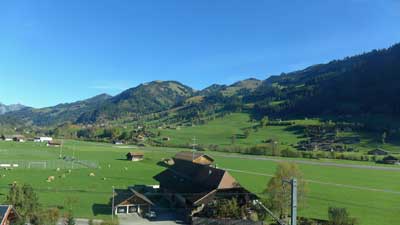
Geneva is a very famous city (though not for tourism reasons) on a lovely lake of the same name, but it’s also notoriously dull and lacking distinction. Rick Steves puts it well by saying that “Geneva is pleasantly situated on a lake, like Buffalo or Cleveland.” The point is, you don’t want to go to Geneva unless you’ve got something specific in mind that you want to see there. There are much better places to visit in Switzerland if your time is limited, or even if it’s not.
Switzerland's cities in summary
Zurich – The largest city, very expensive, geared towards business travelers. It’s generally a pretty and very well-run city that you would enjoy if you visited, but it’s not nearly as interesting as the likes of Vienna, Munich, or of course Paris.
Geneva – Second largest city, in the French part of the country, no major sights. Again, if you visited you’d be very impressed by it and get some great photos, but it’s not worth your time unless you know someone there. There’s an impressive fountain in the lake and you can usually see it from the train as you go through the city, but it’s not really worth going there and staying more than an hour or so.
Basel – Bordering France and Germany, no major sights. It has the famous art market each year, and aside from that it’s even duller than the ones above. Again, if you visited you’d be impressed, but if you later compared photos with friends who went to the Lauterbrunnen Valley instead, you’d kick yourself for going to Basel.
Lausanne – Near Geneva in the French part of the country, very hilly, and certainly more interesting than Geneva.
Bern – The capital, compact, on a lovely river, some interesting sights and the best Swiss city to get a feel for the culture. Bern is fairly close to Interlaken (which we will discuss below) and it can be a great day trip from there, especially on a day where it is foggy and/or rainy in the mountains (and this happens a LOT).
How much time and which Swiss cities to visit?
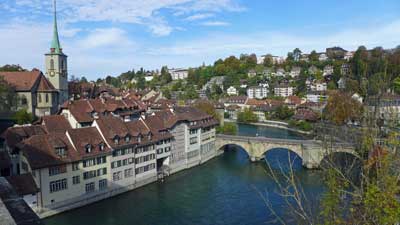
Many people (me included) don’t feel as if they’ve scratched the surface of a new country if they haven’t spent at least a day or two in the largest city. Zurich is certainly pleasant and a useful transit hub so spending one or two nights there wouldn’t be a major mistake. But Zurich isn’t even close to being a city like Paris, Rome, Berlin, Amsterdam, or even Vienna. If you skip it in favor of spending more time in the Swiss Alps, you won’t be missing much.
The 2 Best places to visit in Switzerland for short visits
Interlaken – If you want the best possible Alpine views and activities, head to the Interlaken area, which will be described in detail below. This is my favorite of all places to visit in Switzerland and it will probably be yours as well.
Lucerne – The traditional Swiss tourist retreat, Lucerne is a small city with interesting culture and sights, that is gorgeously set on a lake with plenty of top activities surrounding it.
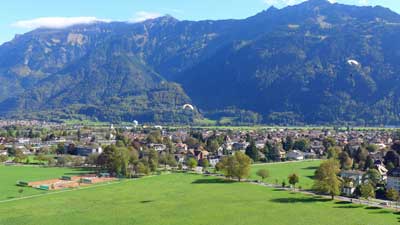
>>>Interlaken and Lucerne: Which to choose and how long to stay in each?
The article linked above will give you more details on which to choose and how long to spend in each place.
What about Zermatt for Alpine views?
Zermatt is a remote car-free village in southern Switzerland that is famous for being the place to see the Matterhorn mountain. It’s also a busy ski resort area, and aside from that, there isn’t much to see or do here. It’s on a private rail line, so it’s more complicated and usually more expensive to reach than Interlaken.
In other words, unless you’ve irrationally placed “Seeing the Matterhorn in person” on your so-called bucket list, skip Zermatt and head to Interlaken on a shorter visit. You won’t be sorry. If you already have enough time in your visit for the main sights around Interlaken and Lucerne and you want to also see the Matterhorn, then by all means go and you’ll enjoy it. There are quite a few other car-free villages in the Lauterbrunnen Valley near Interlaken, so they are not as novel in Switzerland as one might expect.
A weekend in Switzerland? What to see in 3 days
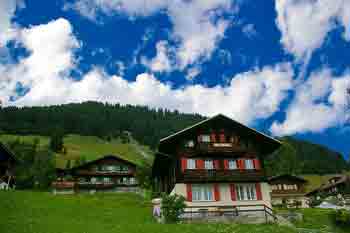
One challenge is that neither has an international airport so you’ll either be flying into Zurich or perhaps Geneva.
Train times from Zurich to Lucerne to Interlaken and back
- Zurich Airport to Lucerne: 1 hour 10 minutes by train
- Lucerne to Interlaken: 2 hours by train
- Interlaken to Zurich Airport: 2 hours 15 minutes by train
As you can see with the travel times above, Zurich Airport to Lucerne is a fairly short trip, but once you add Interlaken into the mix (even if you skip Lucerne) the travel time starts to add up for a weekend visit. With this in mind it’s probably best to just choose one of them and save the other one for another trip.
Lucerne is gorgeous, but the Lauterbrunnen Valley near Interlaken is really the star of the show, so I’d recommend going there first and doing Lucerne on another trip.
What about the Swiss Travel Pass?

The bottom line is that if you are coming to Switzerland for at least 3 days and you want to take 2 or more of the amazing scenic rail journeys that the country is famous for, the travel pass is probably a good deal. It also provides 50% discounts on the Schilthorn cable car and 25% off the Jungfraujoch mountain railway. Both of those are quite expensive on their own, but extremely worthwhile, so the discount is helpful.
The Half Fare Card is probably a better deal for most people
The Swiss Travel Pass is a good deal for those who are going to be spending at least 2 or 3 days riding the rails and seeing Switzerland that way. But if you are mostly going to be focusing on Interlaken and Lucerne and the mountain sights, the Half Fare Card is the best option. For CHF120 (about US$134) you get the card that is good for 30 days and gives you a 50% discount on all trains, cable cars, mountain railways, and other sights and attractions. If you are doing either Schilthorn or Jungfraujoch, the Half Fare Card practically pays for itself with just one of those.
>>>Buy the Swiss Half Fare Card
Many people have questions about the Swiss Half Fare Card so I will explain it a bit here. You can actually buy half price train tickets for travel within Switzerland any time you want and you will see that option when you go to buy them online. The only thing is you have to have and present a valid Half Fare Card when you get on the train and are asked to see your ticket. In other words, you can buy a half fare train ticket today and buy a Half Fare Card just before you get on that train months in the future, and you are fine.
How and why visit the area around Interlaken
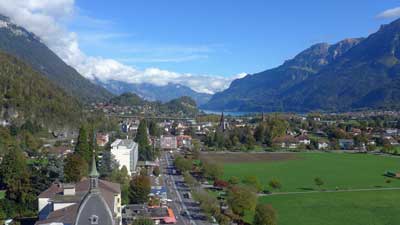
You can see everything discussed below by actually staying in a hotel in Interlaken, but it’s not the Alpine experience that you get if you stay in one of the small villages nearby. You can reach those villages in 20 to 40 minutes from the Interlaken Ost (East) train station, and it’s much easier than it sounds.
The 3 best places to stay to visit the Swiss Alps
Lauterbrunnen – A private train line runs from Interlaken Ost station to the end of its line in Lauterbrunnen. There’s a lovely waterfall here and great hiking trails, but you should probably only stay here if you can’t get to one of the villages mentioned just below. It’s a great little transit hub and it’s definitely gorgeous, so it can be worth a night if you’ve got one to spare.
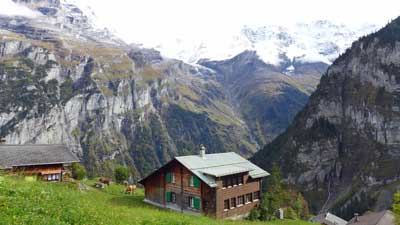
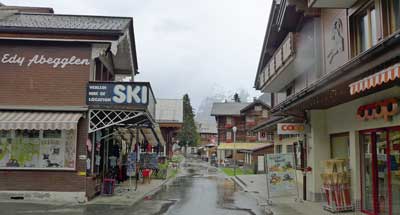
Where to stay in Interlaken and the Lauterbrunnen Valley (with pics)
I get so many questions about where to stay in the Interlaken area that I decided to write a longer version of it and load it with huge photos so readers can get a better feel for each option. I also included recommendations for affordable and well-located photos in each area.
>>>Where to stay in Interlaken and the Lauterbrunnen Valley New for 2024!
The unforgettable things to see here (if the weather is decent)
Schilthorn observation deck and restaurant
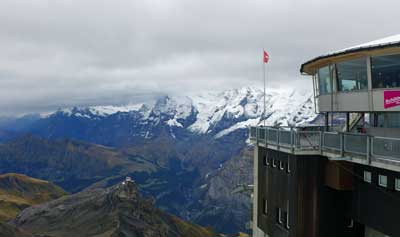
There is a rotating restaurant (with prices similar to normal Swiss restaurants) and a bizarre and anachronistic James Bond attraction based on it being a key location in the 1969 movie On Her Majesty’s Secret Service. The Bond thing is included with the lift, and it’s worth a look.
But the main thing you come here for is the 360-degree view from one of the highest peaks in Europe. Again, the weather here is key, but fortunately all the locals track the visibility on a minute-by-minute basis. If it’s clear up top while you are in the area, it would be a terrible shame to skip it based on the high price. But even if it’s cloudy up top, there are still plenty of wonderful things to see and do in the villages below.
Jungfraujoch observation area
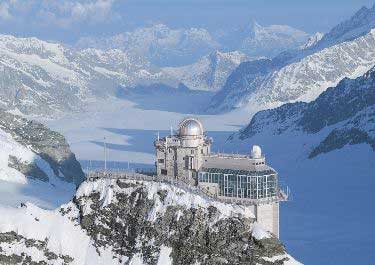
The views from the top are similar to the views from Schilthorn, from the other side of the Lauterbrunnen Valley. Once on top you can have lunch, hike, or even go sledding. It’s also quite expensive at nearly US$200 round-trip unless you have a Swiss Pass or a Eurail Pass for discounts, and it takes most of your day, but you’ll never forget the views from the top.
Harder Kulm mountain and Two Lakes Bridge Observation Deck
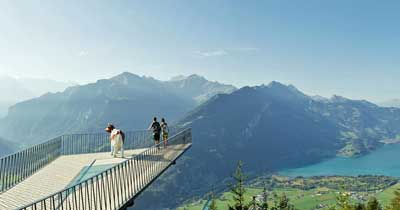
There’s a revolving restaurant about 10 minutes’ walk from the station at the top, which is definitely an unforgettable place for lunch if you’ve got time. It’s not as expensive as you might expect, at least compared to normal restaurants in Switzerland.
The Harder Kulm Railway goes from early April through late November each year. If you are only in Interlaken for one day and/or you are on a strict budget, this is the fastest and best way to get amazing Alpine views in the area.
Getting from Interlaken to Gimmelwald and Mürren
Getting up to these villages sounds complicated and time consuming, but it’s actually fast and easy once you get there. This little guide should help.
Arrive in Interlaken
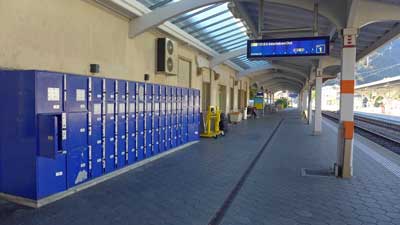
Once you arrive at the Interlaken Ost train station, head for the ticket windows in the office and buy a ticket to your final destination (Lauterbrunnen, Gimmelwald, or Mürren). Eurail passes are good for 25% discounts on the rest of the trip, but not for the whole thing.
From Interlaken Ost to Lauterbrunnen
The private train leaves Interlaken Ost every 30 minutes and arrives in Lauterbrunnen 20 minutes later. If you are staying in Lauterbrunnen then you are probably walking distance from your hotel when you reach the station.
From Lauterbrunnen to Gimmelwald
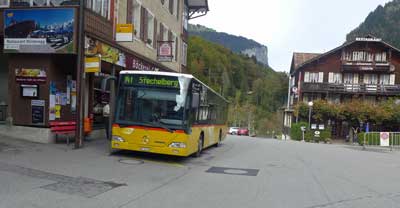

From
Gimmelwald to Mürren
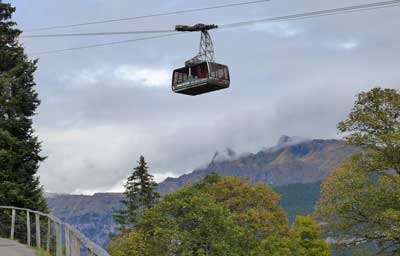
Recommended hotel and hostel in Gimmelwald
I get asked all the time about where to stay in Gimmelwald, so here it is:
Hotel: Esther’s Guesthouse
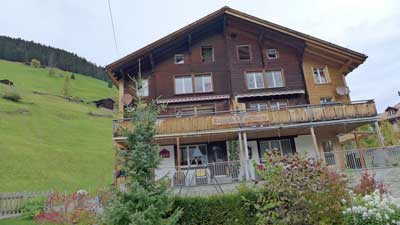
It’s run by Esther, as you might guess, and she is very friendly speaking excellent English. Each room is different and the place feels like a mountain cabin, because it is. She offers an excellent buffet breakfast in the morning, which you have to order the night before. It’s not cheap, but it’s worth it because it’s hearty and there are no other good options nearby.
Book as early as possible because this place is often the first place to sell out in Gimmelwald.
Hostel: Mountain Hostel Gimmelwald
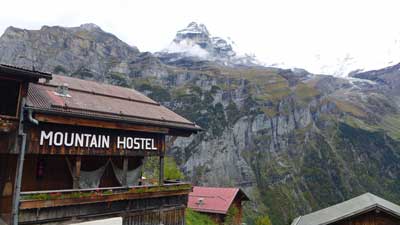
You won’t believe the views from this place, which are the same as from Esther’s except a bit lower and more unobstructed. This place also has a busy bar and restaurant that is basically the only “nightlife” in Gimmelwald. Many hikers get to bed early in this tiny village, but if you want to have a couple drinks and order a pizza or some local options, this is the place to go.
Again, book early because this place is always sold out.
Lucerne and what to do there
Luzern, as it’s spelled locally, is the other traditional holiday destination in Switzerland. Unlike Interlaken, Lucerne actually qualifies as a small city rather than a small resort town, so it’s a very nice contrast and very worthwhile. We have a new article with advice on where to stay in Lucerne and it should be helpful.
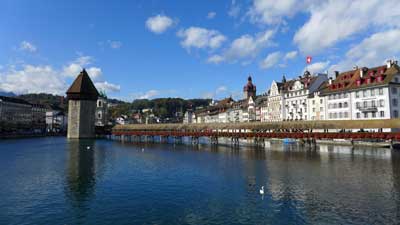
However, unlike Interlaken, the town of Lucerne itself is a great attraction and worth at least a day of exploration. This has always been a rich area so you can expect to find all of the high-end shops and boutiques along the small streets just north of the lake, but there are also many traditional shops and things to see that will appeal to anyone.
Recommended hotel in Lucerne
>>Hotel Des Alpes (3 stars with an amazing location and view)

If this place is booked, which is often the case, then book a hotel as close to it as you can find or afford. The whole historic part of town surrounding it is lovely, with restaurants, bars, and high-end shops. There are also a couple of nearby supermarkets where you can buy inexpensive alcohol and picnic supplies to keep other costs down.
Spend a day in Lucerne itself
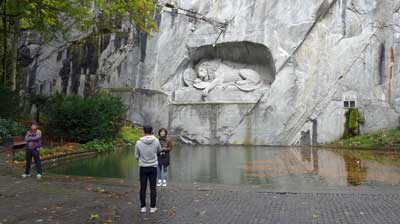
Most of the interesting part of Lucerne is in the area behind those restaurants, and it’s certainly worth doing a self-guided walking tour if not a guided one. Heading farther east you’ll come to another older part of town where the famous lion statue is located. You can’t visit Lucerne without having a look at the lion, and fortunately it’s easy and quick to reach (and it’s free).
Take a lake cruise of some kind
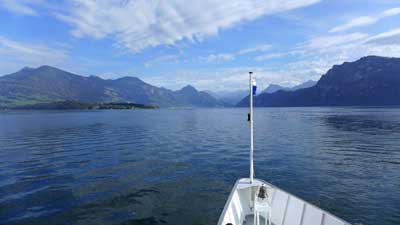
Especially in nice weather, even the short lake tour is lovely, and if you have more time you can jump off at Vitznau and do the scenic hike up Mount Rigi. There are also small lakeside villages that are ideal for a stroll and lunch stop. Long story short, there are dozens of interesting sightseeing options that are available using part of the boat tour, and the views all around are wonderful.
Visit Mount Pilatus
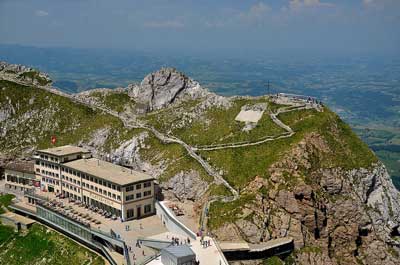
You can take the cogwheel train up and have a more or less flat hike around the summit area, and then take the gondola and cable car back down again. You can do them in the other order, and the cost is the same either way. At around US$65, this is not a cheap hike, but like most everything in Switzerland, the quality is high so it doesn’t feel like a rip-off. You can reach the cable car in 10 minutes on a public trolly bus from Lucerne.
Visit Mount Rigi
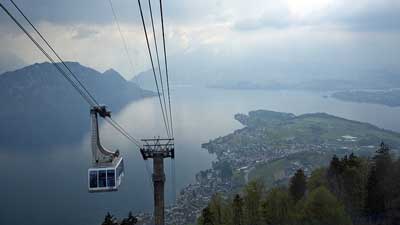
Unlike the other peaks mentioned in this article the Swiss Travel Pass covers both ways to get up and down for free. The others are 50% off with the Swiss Travel Pass or Half Fare Card, except for Jungfraujoch, which is only 25% off with the Swiss Travel Pass and still 50% off with the Half Fare Card.
Visit Mount Titlis
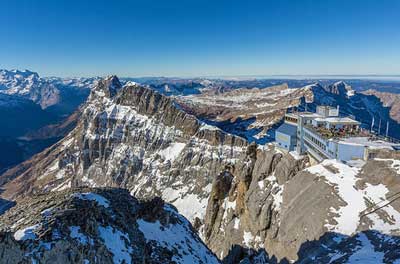
You can reach Titlis by taking a 43-minute train ride from Lucerne to Engelburg and then taking the cable car up from there. As with the others, it’s wise to check the weather immediately before you are going to depart because it can be foggy or cloudy any time of the year, but usually not for whole days at a time.
Additional photo credits
Jungfraujoch by cupweuro on Flickr, Pilatus by Tony Fernandez on Flickr, Rigi by Kosala Bandara on Flickr, Titlis by PaulSchliebs on Flickr

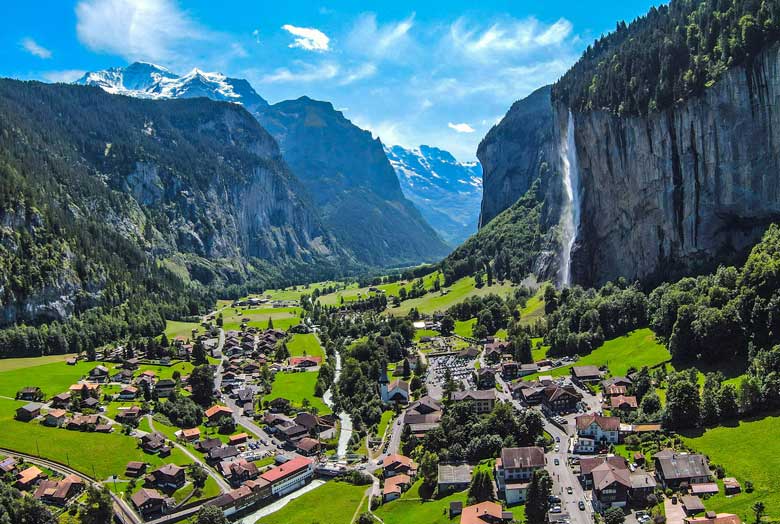
Hey Roger,
Thanks for such a informative article. Appreciate your effort.
I will be coming directly to Lucerne from Heidelberg. Spending 3 days there and then 3 days in Gimmelwald. Where I’m staying at the Hostel that you suggested. I wanted to know will the Swiss Pass cover the Cable car cost to reach Gimmelwald from Interlaken station?
Also, considering I’ll be stayin 3 days in Lucerne and 3 days in Gimmelwald and then taking a train to Geneva to take a flight. What are the things that I can do to make the most of the Swiss Pass?
Adil,
The Swiss Travel Pass actually covers the whole way up to Schilthorn now, and the train from Interlaken to Lauterbrunnen and the bus from there to Stechelberg and the first leg of the cable car are parts of that. You can go up and down as often as you like, which can really come in handy and the cable car station is right behind the Mountain Hostel.
To make the most use of the Swiss Travel Pass I would do the boat cruise in Lucerne and up Mt. Rigi by cable car and down by train, which are all included. And you can take the train to Mt Titlis and then a discount on the ride up.
In the Interlaken area you’ll definitely want to go up Schilthorn, which is the top of the mountain that Gimmelwald is on. And you should also take the cog wheel train to Wengen and walk through town to the cable car station that goes up the mountain behind it. You can also take the boat on Lake Thun. You might even consider doing the Goldenline train to Montreux and then coming back on the faster train that goes through Bern. You’ll find plenty of things to do and nearly all of them are covered by the Swiss Travel Pass. -Roger
No worries at all Roger, and thanks for the reply!
1. So would you recommend this itinerary below?
4 nights in Paris > 4 nights in Nice > 2 nights in Lucerne > 1 night in Bern > 3 nights in Gimmelwald/Murren > onward to Venice
2. Add on question – what would be the best way to get to Switzerland from Nice?
Thanks again,
J
J,
Yep, it happened again. Comments from new people stay highlighted in the system, but comments from previously approved commenters aren’t highlighted, and if they come in right after I stop for the day they sometimes get lost in the shuffle. Sorry again.
Yes, that looks quite good. Four nights can be a long time in Nice, but if you spend one of the days visiting nearby Monaco and part of another going to Cannes or Antibes it will be wonderful.
As you’ve probably noticed, the trains from Nice to Switzerland are weirdly slow, and you probably would have to change in Lyon. There are no fast ways to do it on the ground that I’m aware of, so your choices are to fly from Nice to Geneva or Zurich, or take the lengthy train ride all the way. -Roger
Hi Roger. We will be travelling to Interlaken. We have 3 days to travel. I was looking for a cable car which has the best stunning views, but the cable cars you mentioned in Mürren are only 5 minutes journey. I was searching for a longer trip cable car like 30 minutes or 1 hour. Which areas near Interlaken recommend you?
Rohan,
The most spectacular cable car ride in Switzerland is called Schilthorn and it takes about an hour to reach the observation deck (and restaurant, and James Bond attraction) at the top. The trip is done in 4 segments starting from Stechelberg near Lauterbrunnen. The first short segment is 5 minutes up to Gimmelwald and the next short segment is 5 more minutes up to Murren. Then it’s 2 (or maybe 3?) more segments to the top. It’s expensive but very much worth it if the weather at the top is clear. The revolving Piz Gloria restaurant on top is great for a lunch and maybe a drink, and their prices are similar to restaurants elsewhere in the Interlaken area. Let me know if you have any other questions. -Roger
Hi Roger,
Sorry to message again – just wondering if you could answer the above queries if you’re not too busy?
Any help would be really appreciated, thanks!
J
J,
Sorry I missed it. I just answered it below the original comment. -Roger
Hi Roger, thanks so much for your articles – they’re concise and informative. I’m planning to go to France to Switzerland as part of a longer 7 week solo backpacking trip in September. I’ll have 14 nights roughly to work with for this part of the trip.
My plan so far is this:
4 nights in Paris > 4 nights in Nice > possibly fly to Zurich for a day trip to Vaduz, Liechtenstein > 2 nights in Lucerne > 2 nights in Bern > 2 nights in Gimmelwald/Murren > onward to Venice
1) What do you think of this itinerary? This will most likely be during mid September period.
2) What do you recommend is the best way to get to Switzerland from France?
3) What do you recommend is the best way onward to get to Venice?
Thanks in advance,
J
J,
Sorry that this slipped through the cracks!
I think your itinerary looks pretty good, and I envy you having 14 nights for this part of Europe. More specifically, I’m not sure I’d bother with Vaduz. I haven’t been there myself, and that’s mostly because everyone who HAS gone there reports that it’s quite plain compared to so many other things in Switzerland and Austria, and the only real reason to go is to be able to brag that you’ve been to Liechtenstein. In other words, you could do more with that day unless that is your primary motivation.
Also, Bern is a really nice city, but I don’t think it’s worth 2 nights when there are so many other options available. The historic center of town is bordered by the winding river and you can comfortably see the best of it on a 24-hour visit. Again, Bern is nice, it’s more just that Switzerland has so many more amazing places that most people prefer to spend time on the Alpine views and such rather than the cities. I’d add another night in the Interlaken area, and if you get bad weather while you are there you can do a Bern day trip if there aren’t other good options.
From Paris to Switzerland I would definitely go by train. Paris to Interlaken is about 5.5 hours and starting from shortly before you enter Switzerland the scenery is absolutely amazing. You could fly from Paris to Geneva or Zurich and then take a train to wherever you are staying, but it would probably take even longer and it would be far less pleasant. Buy your train tickets into Switzerland as early as possible for the best fares. Within Switzerland the train tickets are always the same price, so you can buy them when you arrive. Speaking of that, you’ll want to at least get a Half Fare Card and quite possibly an 8-day Swiss Travel Pass. Both of those are explained in detail in the article on the Swiss Travel Pass.
Again, the best way to get from Switzerland to Venice is by train. From Interlaken to Milan it’s about 3 hours and it’s one of the most beautiful train journeys in the world. In Milan you change trains and it’s another 2.5 hours to Venice. That train also has nice scenery, although not nearly as dramatic as the one that goes through the Alps.
Once again, sorry for missing these questions. I’m happy to try to answer all of them and once in a blue moon a comment will get past me. -Roger
Hi Roger,
Thank you for all your information, it’s been extremely useful. I’m planning a road trip with my parents for next month, we will rent a car and start the trip in Switzerland, then go to Munich, Austria and finish in Budapest. We will be in Switzerland for about 2-3 days and after reading your blog I think It would be best to start in Grindelwald and then go to Bern, my question is if you think that would be the best option giving that my parents can’t walk much so I want to take them to places were they can enjoy without walking for long periods. I’m also wondering if we can make a similar route to the train so we can have all the beautiful panoramic views, or if it’s even better to buy a train pass and rent the car after Switzerland.
Thanks in advance 🙂
Dana,
On one hand, I think taking trains in Switzerland is usually the best idea because they go everywhere and it’s totally stress free compared to driving and hoping you are going the right way and then looking for parking each time you want to stop. That said, the Interlaken area is rather car friendly with roads kept in great condition and (fairly expensive) parking available at nearly every place you’d want to stop. The top attractions in the area are Jungfraujoch railway and Schilthorn cable car, and there is very little walking involved in either of them.
Bern is a pretty crowded city but I’m sure there are public parking lots near where you’d be staying. That might require less walking than taking the train, so it could be a good choice, although not a cheap one. I think the train gives you better views, but of course the roads going to the same places also have nice views in some areas. Let me know if you have any other questions. -Roger
Hi Roger-
All of the information was very helpful, and greatly appreciated. My wife and I will have luggage, and plan on visiting in the Interlaken/Gimmelwald/Murren area for 3 or 4 days. Would you chose staying in Interlaken over Murren as a home base? If Murren, is it difficult with luggage to travel there from Montreux?
Thanks,
Joe
Joe,
Murren isn’t difficult with luggage and if you can spend at least 1 or 2 nights in Murren or Gimmelwald I think it would be very much worth it. From Montreux you can take trains with 1 or 2 changes to arrive in Interlaken Ost. At that station you change to a different rail line that goes to Lauterbrunnen every 30 minutes and takes 20 minutes to get there. Once you get off that train you walk across the street from the station (it’s a tiny town) and a bus will be waiting for you to take you to the cable car station in Stechelberg (after passing a waterfall on the bus ride). Once at the cable car station you take the car up 5 minutes (leaving every 30 minutes) to Gimmelwald and to get to Murren you walk off the first car and onto a waiting car across the platform and the next stop is Murren. Once you step off in Murren (or Gimmelwald) you are on a sidewalk that goes all the way through town. Murren is almost completely flat, while Gimmelwald is a slight uphill, but no stairs so it’s easy to wheel luggage. It may sound like a hassle, but you can buy your ticket all the way up either in Montreux or in Interlaken Ost, and it’s all easy and obvious when you get there. I even describe it in greater detail in the article above, with photos.
So if your luggage is suited for walking through an airport in, then you should be fine in Murren or Gimmelwald. But if you are bringing so much luggage that you need a porter and carts, you are going to struggle all over Europe. Let me know if you have any other questions. -Roger
Hi Roger,
I am planning to visit Switzerland in first week of September and only for 2 days. Since its my first trip there n with very short time I am thinking of visiting mount Titlis, Rheinfall n a night stay in interlaken.
I am coming from Dortmund, Germany to Zurich and would be departing from Zurich itself. Coming by flixbus service.
Could you please suggest how to plan this out in best possible way? Also if you could suggest which pass to take to reaching these places within the budget.
Thanks a ton in advance
Rebecca,
If you’ve only got 2 days I would choose Interlaken OR Lucerne, but probably not both. The most dramatic sights and views are in Interlaken, and the unfortunate thing is that you really need a full day there in order to go up Schilthorn or Jungfraujoch, which are the two best peaks. Those are also quite expensive, so if you are trying to keep expenses low that might be another problem. Coming from Zurich it’s obviously faster and easier to go to Lucerne so I think I would stay there and do Titlis and Rhein Falls in your short time. You’ll also want to do at least a 90-minute boat ride in Lucerne, and spend some time looking around the town, which is gorgeous.
If you are going to do all of those things then a Half Fare Card will probably pay for itself, but not by too much because the train from Zurich to Lucerne is actually pretty cheap. The Half Fare Card, which is discussed in detail in my article about the Swiss Travel Pass, costs CHF120 for a 30-day pass and it literally gets you a 50% discount on all train fares and cable cars and boat rides and mountain trains. If you are only there two days it might not be easy to do CHF240 worth of rides and things, but it can definitely be done if you plan a busy schedule because almost everything in Switzerland is quite expensive at full price. Let me know if you have any other questions. -Roger
Hi Roger,
I recently came across your article and wanted to sincerely thank you for your posts, it has been extremely helpful as we are planning our first trip to Switzerland!
My partner and I are planning a 16 day trip split between France and Switzerland. We expect to be on Switzerland from Sept 14-24. Based on your recommendations we have put together an itinerary and would love your feedback and how can make the best of it. We love the outdoors and enjoy good food – so definitely open to any other suggestions you might have for us. We are looking to get the 8 day Swiss travel pass – hopefully this will help us save some money on the train fares. Would be especially grateful if you can point us in the right direction for places to stay and any other spots we might have missed. Many many thanks in advance!!! Looking forward to your guidance.
Sept 14 – arrive Zurich evening. birthday celebration!
Sept 15 – morning leave for Lucerne
Sept 16 – leave for Mt. Pilatus in the am. Cog wheel train, hike through alpine flowers, cable car down to Lucerne, bus from cable car to Lucerne
Sept 17 – morning leave for Mt Rigi
Sept 18 – morning travel to Interlaken / Lauterbrunnen, cable car to Murren, hike down to gimmelwald, trummelbach 10 glacial falls.
Sept 19 – leave for Jungfraujoch, explore ice Palace, oberhoffen castle
Sept 20 – leave for Schynige Platte.
Sept 21 – leave for zermatt in the morning. Explore matterhorn in the afternoon.
Sept 22 – explore zermatt. Gornegratt station in the afternoon..rotenboden on the way down.
Sept 23 – Cambrian hotel (geothermal pool)
Sept 24 – leave for Bern to catch flight to Paris
Kalindi,
Your itinerary looks extremely well planned and organized. You are even going to a couple places that I’ve yet to go myself. I think the idea of leaving a full day for each of your major sights is perfect. I’m sure you’ve read that the weather can be cloudy at the tops of the peaks at times and in that case you might only have part of a day with ideal conditions, so allowing flexibility is key. And I think the 8-day Swiss Travel Pass will be very worthwhile. The shorter passes are pretty expensive and it can be tough to get enough value out of them, but the 8-day and 15-day versions are much easier to justify. Better still, on those days when you only have one thing scheduled I’m sure you’ll be doing other things, and the Pass should cover most of them.
It’s hard to recommend hotels because budgets are different and availability is unpredictable, although I do mention a few favorites in the article above. I’d say that if you can spare two nights to stay in Gimmelwald or Murren that you should do it. The town of Interlaken itself is convenient, but it’s not very interesting. The nearby villages including Lauterbrunnen, Wengen, and Grindelwald are all really nice, but Gimmelwald is absolutely magical as a tiny farming villages with no cars on the side of the mountain. Murren is larger with far more choices, and it’s a great option if you can’t find something that works in Gimmelwald. As for Lucerne, it really IS a gorgeous and lovely city and if you can stay somewhere near the Chapel Bridge you’ll be in the middle of everything and also a short walk to the train station and boat dock. Let me know if you have any other questions. -Roger
Thanks Roger.
I got a completely opposite review on other forum ( https://www.tripadvisor.co.uk/ShowTopic-g188052-i1159-k11864716-The_best_way_to_travel_to_Interlaken_from_Paris-Bern_Bern_Mittelland_District_Canton_of_Be.html) who advised that October is not good time to travel to Switzerland and Luzern is better than Interlaken. This has made me confused and I also checked the online predicted weather for my travelling dates which shows it is going to rain and cloudy those days. I am planning to skip it for now and maybe go to some other country.
Praveen,
The person asking that question apparently only has one afternoon to spend in one of those cities, and in that case I actually agree that Lucerne is better for a 5-hour visit than Interlaken. The actual town of Lucerne is really gorgeous and it’s much nicer than the town of Interlaken. BUT, the most dramatic scenery and peaks in the Alps are in the Interlaken area, and it really only takes another hour or so to reach the best area for that. If you’ve got a full day then Interlaken is the better choice because the gives you time to go up either Schilthorn or Jungfraujoch (both mentioned in the article above), and two or three days are even better.
As for the weather, October is usually pretty nice in Switzerland, but it can actually rain any day of the year in those areas. In fact, the summer is the rainy season in the Alps, and it’s usually drier in October. Even if it’s cloudy and raining a bit you can still really enjoy a visit. The thing you want to avoid is being there when the tops of the mountains are within the clouds so it’s totally foggy up there. Unfortunately, that can also happen any day of the year, but it usually is only like that for part of a day. It’s often clear in the morning and then cloudy and sometimes rainy in the afternoon. Of course, when it’s like that the weather forecast says “rain” for the day, even though it’s sunny until 1pm. I hope this helps. -Roger